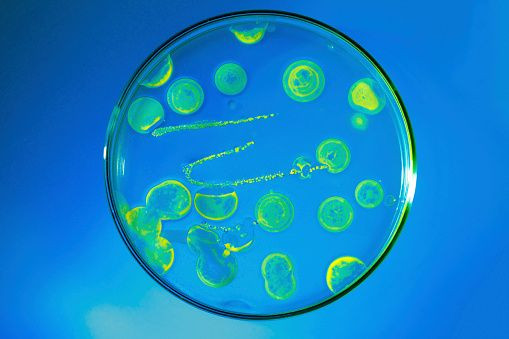Cyborg Bacteria: Wonder Microbes Paving The Way To The Future

Bacteria are not always harmful. Yes, certain bacteria cause diseases in animals and humans but over the years, scientists have found ways to turn them into a cyborg and make human life simpler.
A research presented at the 254th National Meeting and Exposition of the American Chemical Society (ACS) on Tuesday reveals how bacteria can out beat plants at photosynthesis. Kelsey K. Sakimoto, who led the research at Yang’s Lab, University of California, Berkeley, harnessed inorganic semiconductors on bacteria with an aim to produce useful chemicals from carbon dioxide and water.
“Rather than rely on inefficient chlorophyll to harvest sunlight, I’ve taught bacteria how to grow and cover their bodies with tiny semiconductor nanocrystals,” Sakimoto was quoted as saying in a news release published by the ACS. “These nanocrystals are much more efficient than chlorophyll and can be grown at a fraction of the cost of manufactured solar panels.”
A video, published on YouTube by Headline Science, an ACS production, shows how Sakimoto worked with a naturally photosynthetic bacterium, M. thermoacetica, which produces acetic acid from carbon dioxide as part of its normal respiration.
He fed these kind of bacteria with cadmium and amino acid Cysteine. These bacteria then synthesized cadmium sulfide that functioned as solar panels on their surfaces. Using the solar energy, the hybrid bacteria (M. thermoacetica-CDS) can synthesize food, fuel, and plastic, according to Sakimoto. While further research is underway to find more benign light absorbers than cadmium sulfide, scientists hope these cyborg bacteria — that operate at an efficiency of 80 percent — can produce the required chemicals in future.
These hybrid bacteria are said to be more efficient than plants. “Synthetic biology and the ability to expand the product scope of CO2 reduction will be crucial to posing this technology as a replacement, or one of many replacements, for the petrochemical industry,” Sakimoto asserted.
A research paper published in June last year referred to a similar artificial photosynthetic system that tapped solar energy and used carbon dioxide and water and at an efficiency of 10 percent, much higher than natural photosynthesis that converts about 1 percent of solar energy into carbohydrates used by plants. The scientists combined the hydrogen-oxidizing bacterium, Raistonia eutropha, with a cobalt-phosphorus water-splitting catalyst. The industrial mimic could be used to synthesize biomass, fuels and other useful products, according to researchers.
Apart from carbon dioxide reduction, cyborg bacteria can also be used for degradation of environmental pollutants. In a video published by iBiology, an online platform for the latest findings in modern biology, Victor de Lorenzo talks about how a bacterium, Pseudomonas putida, can be turned into a cyborg for decontamination and bioremediation — a waste management technique that involves the use of naturally occurring organisms to break down hazardous substances into less toxic or non-toxic substances. Lorenzo is a professor of molecular environmental microbiology at The National Center for Biotechnology, Madrid, Spain.
Many other innovators across the globe have been exploring the possibility of using bacteria for cleaning the environment. Interestingly, a Japanese research team from Kyoto Institute of Technology and Keio University last year discovered a species of bacteria — Ideonella sakaiensis — that naturally breaks down polyethylene terephthalate, or PET, a lightweight colorless plastic used to manufacture water bottles and polyester clothing, among other products. This particular type of plastic was notoriously resistant to being broken down, according to researchers.
Another research released last year revealed the findings of scientists from ETH Zurich. In a step towards the future of biopharmaceutical production, the researchers developed a hybrid creature from E. coli bacterium, used frequently in biological research. The cyborg bacteria developed by the scientists could be controlled by a computer, according to the researchers. The scientists underlined how the modified bacteria reacted to change in environment, especially in terms of exposure to light. When the hybrid creature was exposed to green light, the production of methionine, an amino acid essential for bacterial growth, was stimulated, the research revealed.
© Copyright IBTimes 2024. All rights reserved.




















